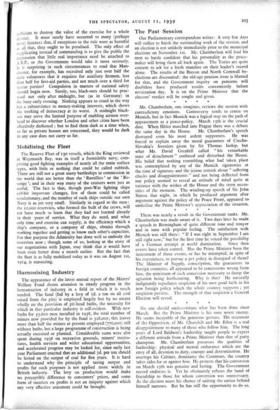Mobilising the Fleet
The Reserve Fleet of 130 vessels, which the King reviewed in Weymouth Bay, was in itself a formidable navy, com- prising good fighting examples of nearly all the main surface types, with little or nothing that could be called rubbish. There are still not a great many battleships in commission in the world that are better than the Ramillies ' or the Re- venge '; and in their way many of the cruisers were just as useful, The fact is that, though post-War fighting ships exhibit important changes, few of them could be called revolutionary, and the number of such ships outside our own Navy is as yet very small. Similarly in regard to the men : the 12,000 reservists, who formed the bulk of the crews, will not have much to learn that they had not learned already in their years of service. What they do need, and what only time and exercise can supply, is the efficiency which a ship's company, or a company of ships, obtains through working together and getting to know each other's capacities. For that purpose the Admiralty has done well to embody the reservists now ; though some of us, looking at the story of our negotiations with Japan, may think that it would have been even better done a month earlier. But the fact that the fleet is as fully mobilised today as it was on August 1st, 1914, is reassuring.








































 Previous page
Previous page